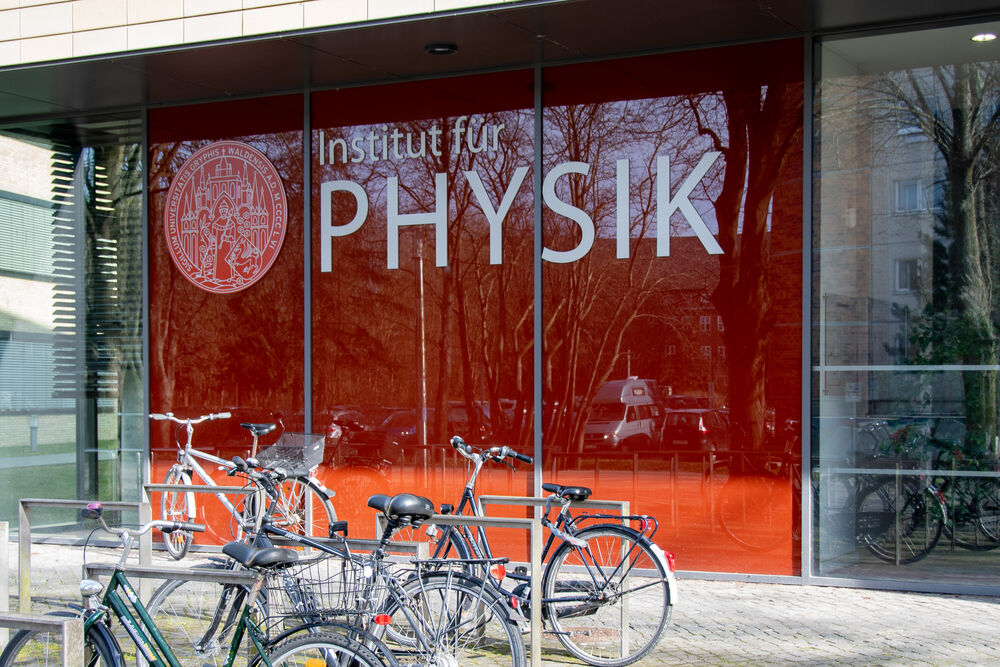Similar to electrons in atomic shells, the building blocks of the atomic nuclei, protons and neutrons, quantum mechanically group together in nuclear shells. Full shells correspond to particularly high binding energies and stabilities. Thus, the shell closure numbers 8, 20, 28, 50, 82 and 126 are called “magic” numbers. The doubly-magic nuclei are particularly interesting. For these nuclei, both the proton number Z and the neutron number N indicate shell closures. And, among those doubly-magic nuclei, the nucleus of the tin isotope 100Sn is the most prominent: It is the heaviest nucleus for isotopes that have the same Z and N values, Z = N = 50. But so far, a direct experimental determination of its mass has not been possible. This is due to the difficulties in the production of 100Sn as well as in its short half-life of just about a second.
Directly adjacent to the doubly-magic 100Sn, we find the nuclei of the element indium, which have one proton less than the tin nuclei. It was now possible to perform precision mass measurements of the indium isotopes 99In, 100In and 101In with the ISOLTRAP setup at CERN. This was the first direct mass measurement for indium-99; the accuracy of the indium-100 and indium-101 mass values have been improved significantly.
The Multi-Reflection Time-of Flight (MR-ToF) component of ISOLTRAP, a contribution from Greifswald, was employed for the mass measurement of 99In. This part of the ISOLTRAP setup also serves as mass separator when it comes to the preparation of ions of other isotopes for measurements with the Penning traps, which provide even higher resolution and more accurate results: This combination of MR-ToF mass separation and Penning-trap mass measurements was employed for determining 100In and 101In.
The measurement of 100In is the most significant for determining the mass of the doubly-magic tin nucleus 100Sn. ‘Using the measured mass value of the indium-100 nucleus, together with the energy that is released in the beta decay from 100Sn into 100In, we can now infer the mass of the tin-100 nucleus. Furthermore, due to the high accuracy of our measurement, we have been able to resolve an inconsistency between 100Sn mass values that were found in the latest beta-decay studies,’ comments Frank Wienholtz a former doctoral candidate at Greifswald, who now works at TU Darmstadt. ‘The comparison of calculated values from a theory collaboration with Prof. Schwenk in Darmstadt with the systematic inspection of the binding energies of neighbouring nuclei has resulted in clear-cut conclusions about the doubly-magic 100Sn nucleus,’ adds Prof. Dr. Lutz Schweikhard from the Institute of Physics at the University of Greifswald.
This research was supported by the German Federal Ministry for Education and Research and by the Max Planck Society.
Further information
M Mougeot et al. (2021): Mass measurements of 99-101In challenge ab initio nuclear theory of the nuclide 100Sn, Nature Physics. DOI: https://doi.org/10.1038/s41567-021-01326-9.
German research institutes involved in this project
Institute of Physics at the University of Greifswald
Max Planck Institute for Nuclear Physics in Heidelberg
Institute of Nuclear Physics at the Technical University of Darmstadt
Helmholtz Centre for Heavy Ion Research in Darmstadt
Institute of Nuclear and Particle Physics at the Technical University of Dresden
CERN press release
Grabbing magic tin by the tail
Related press releases
Ion ping pong reveals forces in atomic nuclei
Ion Pingpong confirms magic neutron number of exotic atomic nuclei
Neue Einblicke in die Magie des Atomkerns (in German)
„Phasenuhr“ als hochpräzise Atomwaage (in German)
Contact at the University of Greifswald
Prof. Dr. Lutz Schweikhard
Institute of Physics
Felix-Hausdorff-Straße 6, 17487 Greifswald
Tel.: +49 3834 86 4700
lschweikphysik.uni-greifswaldde
Spokesperson of the ISOLTRAP Collaboration
Prof. Dr. Klaus Blaum
Max Planck Institute for Nuclear Physics
Saupfercheckweg 1, 69117 Heidelberg
Tel.: +49 6221 516850
klaus.blaummpi-hd.mpgde
Contact for the Theoretical Investigations
Prof. Dr. Achim Schwenk
Institute of Nuclear Physics, Theory Centre
Technical University of Darmstadt
Schlossgartenstraße 2, 64289 Darmstadt
Tel.: +49 6151 16 21550
schwenkphysik.tu-darmstadtde

